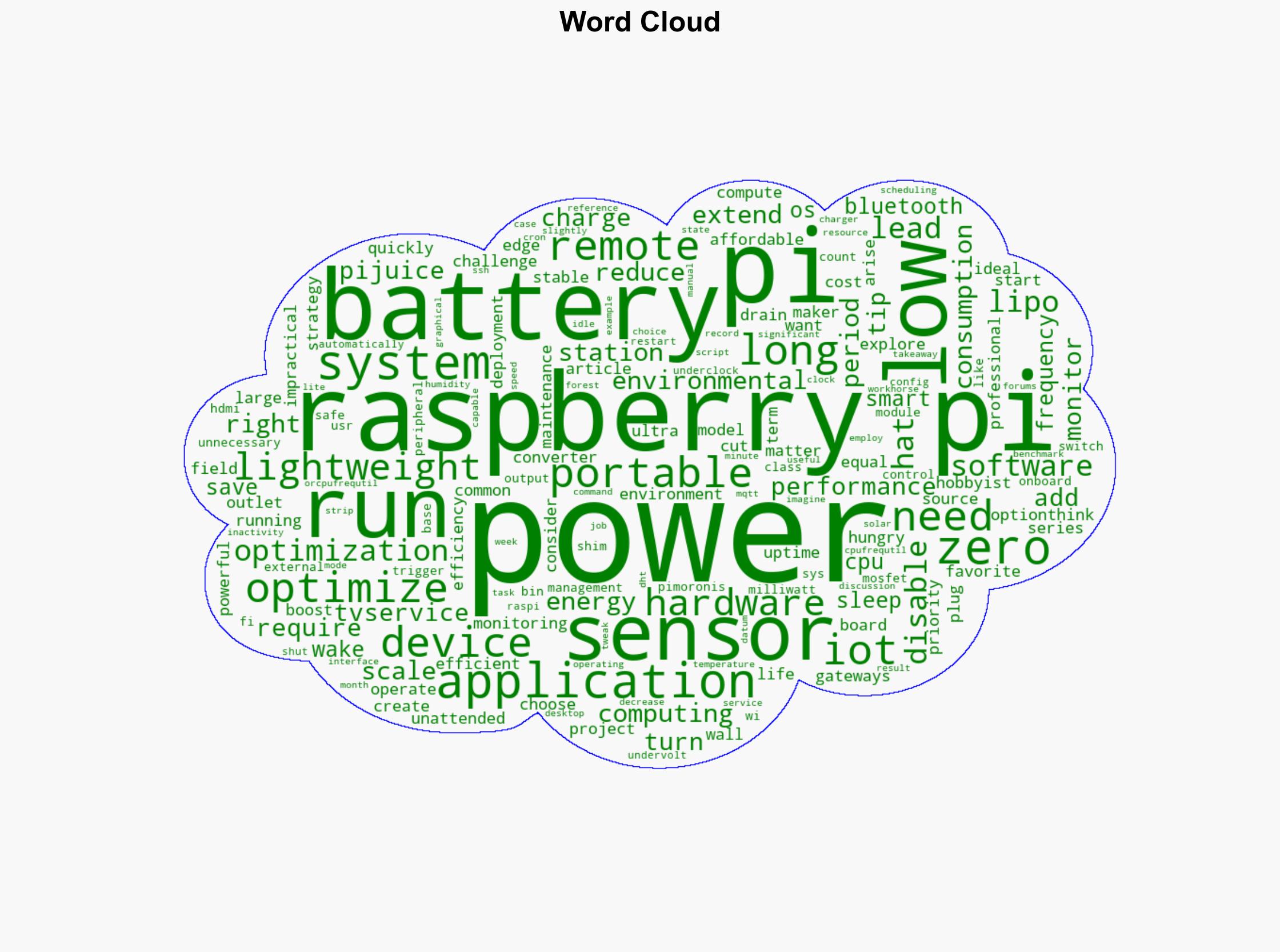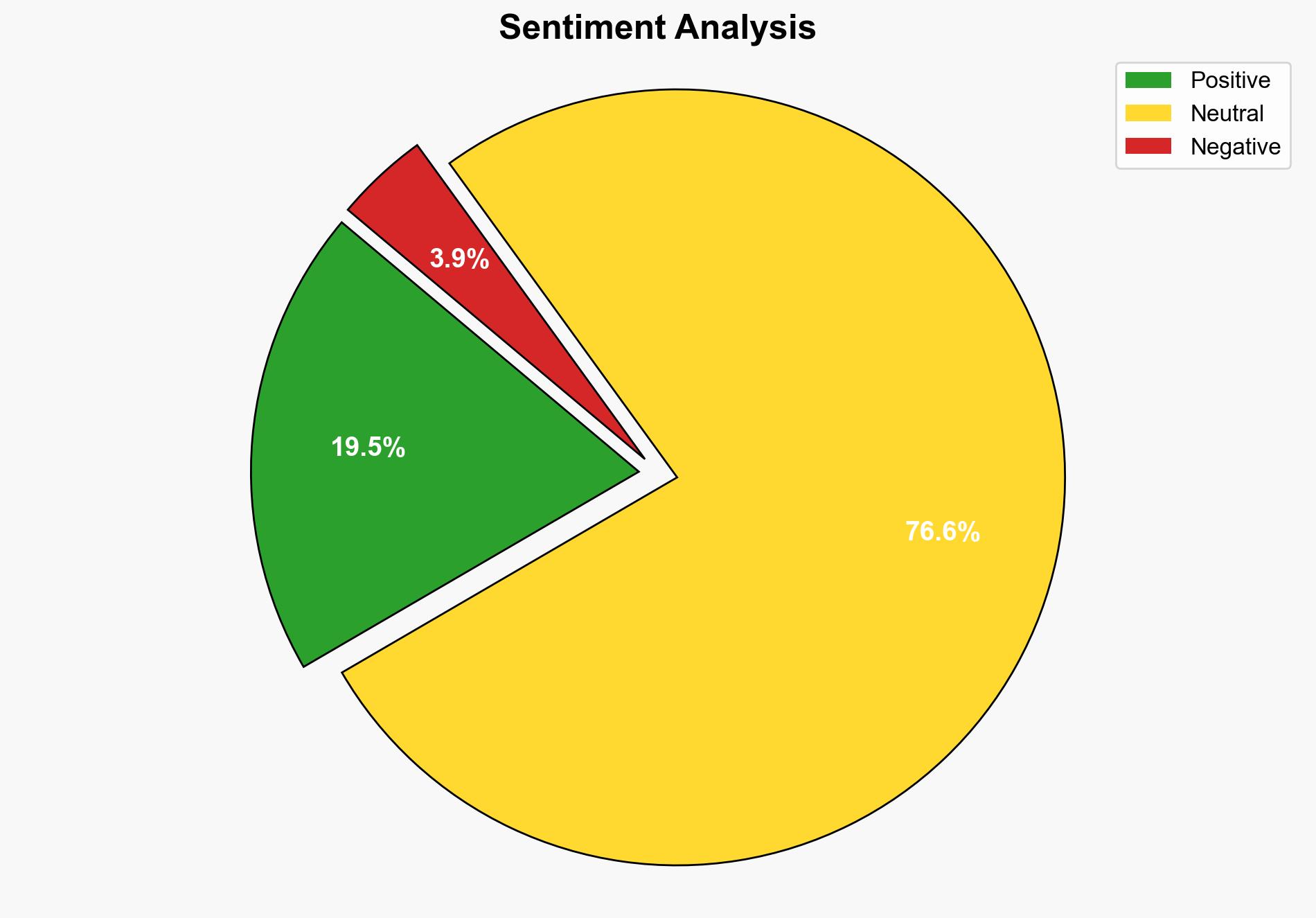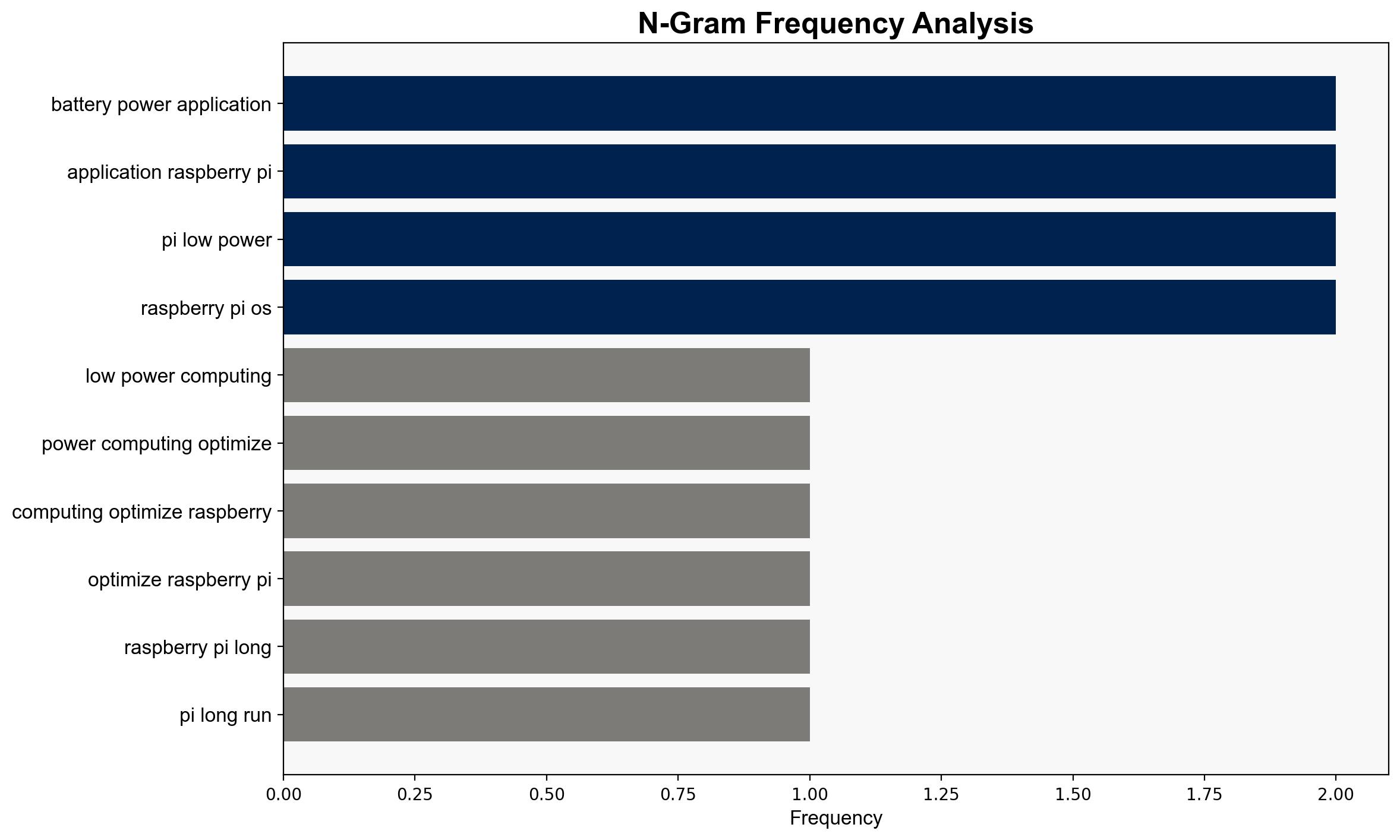Low -Power Computing Optimizing Raspberry Pi for Long-Running Battery-Powered Applications – Javacodegeeks.com
Published on: 2025-09-11
Intelligence Report: Low-Power Computing Optimizing Raspberry Pi for Long-Running Battery-Powered Applications – Javacodegeeks.com
1. BLUF (Bottom Line Up Front)
The most supported hypothesis is that optimizing Raspberry Pi for low-power applications is feasible and beneficial for extended battery life in remote and IoT applications. This conclusion is supported by structured analytic techniques, including cross-impact simulation, which indicates that hardware and software optimizations can significantly enhance energy efficiency. Confidence level: Moderate. Recommended action: Encourage further research and development in low-power computing solutions for IoT and remote sensing applications.
2. Competing Hypotheses
1. **Hypothesis A**: Raspberry Pi can be effectively optimized for low-power, long-running battery-powered applications through strategic hardware and software modifications.
2. **Hypothesis B**: Despite optimization efforts, Raspberry Pi’s power consumption remains a significant barrier to its use in long-running battery-powered applications, limiting its practicality in such scenarios.
Using Bayesian Scenario Modeling, Hypothesis A is better supported due to the detailed strategies provided for hardware and software optimization, which align with known techniques for reducing power consumption.
3. Key Assumptions and Red Flags
– **Assumptions**:
– The Raspberry Pi Zero and similar models are inherently more energy-efficient than other models.
– Users have the technical expertise to implement the suggested optimizations.
– **Red Flags**:
– Potential overestimation of power savings from software optimizations.
– Lack of empirical data on long-term performance and reliability of optimized systems.
4. Implications and Strategic Risks
The successful optimization of Raspberry Pi for low-power applications could lead to widespread adoption in IoT and remote sensing, reducing operational costs and increasing deployment in inaccessible areas. However, failure to achieve significant power savings could result in increased maintenance costs and reduced system reliability. There is also a risk of cybersecurity vulnerabilities if power-saving measures compromise system integrity.
5. Recommendations and Outlook
- Encourage collaboration between hardware developers and software engineers to enhance optimization techniques.
- Conduct field tests to gather empirical data on power savings and system reliability.
- Best Case: Successful optimization leads to widespread adoption in IoT, enhancing data collection and operational efficiency.
- Worst Case: Optimization efforts fail, leading to increased costs and limited deployment.
- Most Likely: Incremental improvements in power efficiency, with gradual adoption in niche applications.
6. Key Individuals and Entities
Specific individuals are not mentioned in the source text. Focus remains on entities involved in Raspberry Pi development and IoT applications.
7. Thematic Tags
low-power computing, IoT optimization, energy efficiency, Raspberry Pi, remote sensing applications




